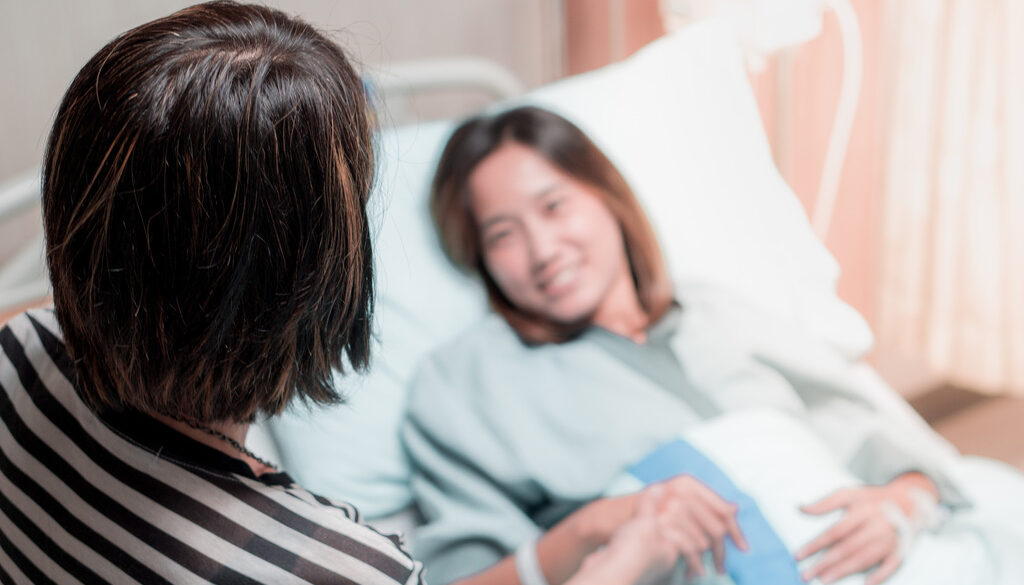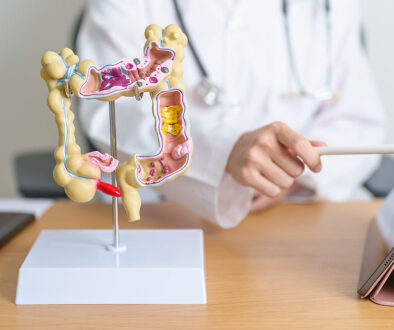A Step-by-Step Guide to a Therapeutic Endoscopy for IBD
Inflammatory bowel disease (IBD) is a chronic disorder characterized by inflammation of the gastrointestinal tract. IBD affects millions of people worldwide and can have a significant impact on their quality of life. In these cases, a therapeutic endoscopy can help.
If you suspect you have IBD, one of our gastroenterologists in Raleigh may need to perform a therapeutic endoscopy.
This is a procedure used to diagnose and treat gastrointestinal disorders. It involves the use of an endoscope, which is a thin, flexible tube with a camera on the end that allows doctors to see inside the gastrointestinal tract.
We’ll explore what happens during the procedure for IBD, how to prepare, what to expect, and how it can help you get the best treatment for the condition.
How Can a Therapeutic Endoscopy Help Those With IBD?
It may be used to treat complications of IBD, such as strictures (narrowing of the intestine), bleeding, and blockages. It can also be used to take biopsies, which are samples of tissue that can be analyzed to determine the extent of inflammation in the gastrointestinal tract.
Our Step-by-Step Guide to a Therapeutic Endoscopy
Step One: Preparation
What Is the Prep for an Endoscopy?
The most important part of the prep is following your physician’s instructions. These may vary somewhat from case to case, but in general, prep involves fasting for a certain period before the procedure.
You may also be given specific instructions on how to prepare your bowel for the procedure, which may include taking laxatives or enemas. It is important to follow these instructions carefully to ensure that the procedure can be performed safely and effectively.
In addition, you should inform your doctor of any medications you are taking, including over-the-counter medications and supplements, as some medications may need to be stopped before the procedure. Your doctor may also ask about any allergies or medical conditions you have.
Step Two: Procedure
What Happens During the Endoscopy for IBD?
First, you’ll be given a sedative to help you relax. While you’ll be at ease, you’ll also be generally awake enough to enable you to communicate with the medical team throughout the procedure. The length of the procedure can vary depending on the specific circumstances, but it typically takes between 30 minutes and an hour.
If your doctor needs to examine your colon and large intestine, they will gently insert the endoscope into your rectum and guide it through to conduct a thorough examination.
We’ll perform therapuetic interventions if any abnormalities are found. This may include dilating (stretching) strictures or removing polyps.
If needed, we’ll take biopsies, which are samples of tissue that can be analyzed to determine the extent of inflammation in the gastrointestinal tract, during the procedure.
Step Three: Recovery
How Long Does It Take to Recover From a Therapeutic Endoscopy?
Recovery time depends upon the extent of the procedure and if any interventions were performed.
After the procedure, we’ll monitor you until the sedative wears off, which typically takes a few hours. There will be some mild discomfort, such as bloating or cramping, but these symptoms usually resolve within a day or two.
It’s important to plan to have someone drive you home, as the sedative may affect your ability to drive or operate machinery.
We’ll give you specific instrutions about how to take care of yourself after the procedure. This may involve avoiding certain foods or activities for a certain period. You should follow these instructions carefully to ensure that you have a smooth recovery.
Who Gets Inflammatory Bowel Disease, and What Places You at Greater Risk for It?
IBD can affect people of all ages, but it usually develops between the ages of 15 and 35. There is a genetic component to IBD, and individuals with a family history of the condition are at an increased risk of developing it themselves. Environmental factors, such as smoking and certain medications, can also increase the risk of developing IBD.
What Are the Two Main Types of IBD?
The two main types of IBD are Crohn’s disease and ulcerative colitis. Crohn’s disease can affect any part of the gastrointestinal tract, while ulcerative colitis affects the colon and rectum.
What Are the Main Treatments for Inflammatory Bowel Disease?
The main treatments for IBD include medications, lifestyle changes, and surgery. Medications used to treat IBD include anti-inflammatory drugs, immunosuppressants, and biologic therapies.
Lifestyle changes, such as avoiding “trigger foods” and getting regular exercise, can also help manage symptoms. In some cases, surgery may be necessary to remove damaged portions of the gastrointestinal tract.
Raleigh Medical Group Gastroenterology’s Center for Advanced GI Therapeutics
At RMG Gastroenterology, we have combined the experience and expertise of our leading physicians to create a Center for Advanced GI Therapeutics.
Therapeutic endoscopy can mean many things. Some of these tasks are as basic as removing polyps. In other cases, it may involve dilating the esophagus to prep it for upper endoscopic procedures.
While therapeutic endoscopies can be performed to help those with issues related to IBD, the term most often refers to the more complicated procedures that are performed in a hospital’s endoscopy unit. These procedures may include:
- ERCP
- APC (argon plasma coagulation)
- Removal of large polyps
RMG Gastroenterology: Ready to Provide the World-Class Treatment You Deserve
We are the premier gastroenterologist in Raleigh and the surrounding areas. With several convenient locations, our endoscopy centers offer a combination of technological innovation coupled with compassionate care.
If you are struggling with IBS or other similar concerns, contact us. We would consider it a privilege to treat you.




